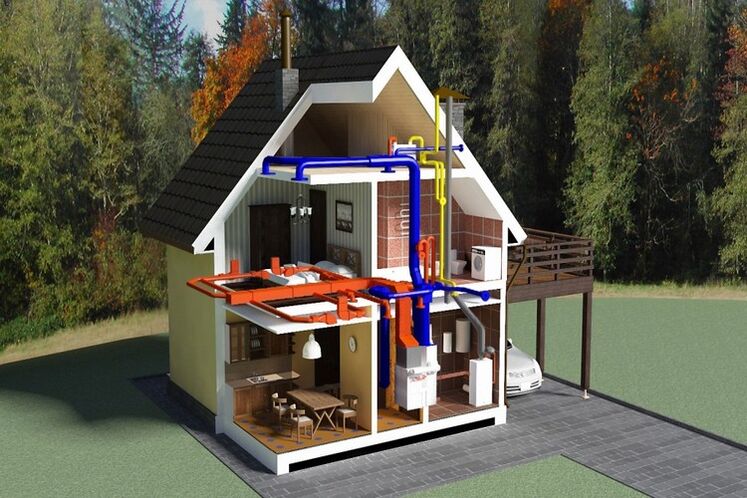Resource and energy-saving technologies require a binding, integrated approach to the generation, distribution and consumption of electricity. And when building houses, modern energy-saving technologies are repeatedly combined with innovations in the construction sector, because a considerable part of the electricity is used to heat the house in cold weather and to cool it in hot weather. This immediately requires the planned use of energy-efficient materials. In addition, tailor-made household supplies will make it possible in some cases to dispense with the traditional type of electricity supply altogether.
Energy-saving technologies in construction
The best example of energy-saving technologies in construction so far are the so-called "energy-saving houses", in which, ideally, air conditioning is maintained in winter without conventional heating and in summer without heating.
Such buildings are also known as zero-energy houses, depending on the technological variation - "zero-energy houses" or "passive houses".
To come as close as possible to the standards of such a house, it contains:
- Install your own boiler room or another heat source, often connect pumps that recirculate the heat from the exhaust air from the ventilation duct, the geothermal energy or the wastewater,
- replace part of the solar power (collector) and the direct solar energy is used competently according to the heat balance of the building by connecting translucent and reflective structures,
- They use modern thermal insulation materials, and this applies to both building materials and communication systems.
The energy-saving method described above assumes that the building will become the end consumer of electricity from power plants. However, the possibility of a complete switch to individual energy supply systems is now being considered as an innovative practice when the building itself becomes a "power station" and begins to distribute electricity to other consumers.

This is possible, for example, through the widespread use of nano-photovoltaic cells, which are considered to be one of the most promising solutions. In Freiburg, the local solar institute uses the city area as a kind of "test site" for solar technology tests, installs solar panels in the stadium, builds entire quarters (58 residential buildings and one office building on the edge of the city) for the new concept of "active houses""The main obstacle to the widespread adoption of these technologies is the high cost of high-purity industrial silicone used in batteries (around $ 450 / kg). It has been replaced by nanotechnology and a special carbon - fullerene. So far, however, its efficiency is 2. 5 times lower than that of silicone solar cells.
Energy-saving technologies in everyday life
The main direction in the creation of energy-saving technologies in everyday life is the individual regulation of electricity consumption through "smart" technologies, depending on:
- personal habits of residents and preferences in the microclimate,
- the time of year (day) at which the "intelligent" system is rebuilt, switched on and with what intensity it should work.
For example, an automatic lighting system only switches the light on when required, switches it off during the day and on in the evening when it is activated by a sound via the built-in microphone. When there is noise within a radius of 5 meters, an energy-saving lamp lights up automatically, which does not go out when someone is in the room.
But until these "intellectual" innovations dominate, experts recommend using methods of "preventive saving" of electricity in everyday life, including:
- Replacement of incandescent lamps with energy-saving (with a 5- to 6-fold reduced consumption) or even more economical LED lamps,
- the conversion to household appliances of a high energy efficiency class (A-A +++), which can show a difference of 50% compared to outdated models,
- Switching off devices (devices) in standby mode: TVs, music centers and tape recorders that still consume 3-10 W when they are switched off but not switched off,
- Shutting down or putting the computer into sleep mode, which "eats" 70-120 kW / h per month at work around the clock.
Particular attention should be paid to the refrigerator, which is recommended:
- do not place next to the stove (increases energy consumption by 25-30%),
- do not fill with food that has not yet cooled down,
- prevent the formation of a gap in the seal,
- Do not cover the radiator or lean your "back" against the wall.
The introduction of energy-saving technologies in the residential and municipal sector looks like a switch to drives with the functions of speed optimization depending on the real load, which can save up to 50% electricity when operating elevators or ventilation systems.


























